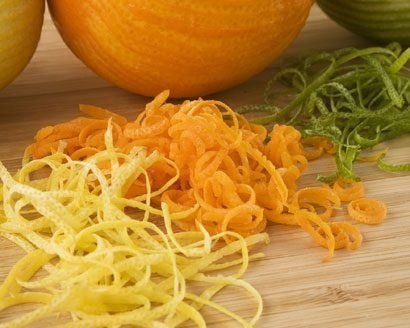Best Tips For Zesting From Sarabeth's Kitchen
Have you ever taken a bite of a lemon cheesecake and wondered how those bright and powerful flavors got there? If you're familiar with baking, you'll know that the measurements of wet and dry ingredients are calculated to an exact science, and that an extra squeeze of lemon juice here or there will not only water down your pastry masterpiece, but will change the entire equation and lead to poor results. So how does the flavor of lemon get in there? The secret to getting these flavors in your baking, whether it be lemon or any other citrus flavor, is zesting, explains Sarabeth from Sarabeth's Kitchen in New York City.
The best way to think about zest is that it's the oil that holds the strongest and most concentrated flavors of the fruit. For the most favorable results with zesting, it's best to use a zester that has small, sharp holes. This allows you to zest the outer surface efficiently without taking any of the white, bitter pith of the fruit with it. If the recipe calls for zest and juice, make sure to zest first, for a squeezed lemon is a lot more difficult to properly zest that a whole, firm one.
Anne Dolce is the Cook Editor at The Daily Meal. Follow her on Twitter @anniecdolce
